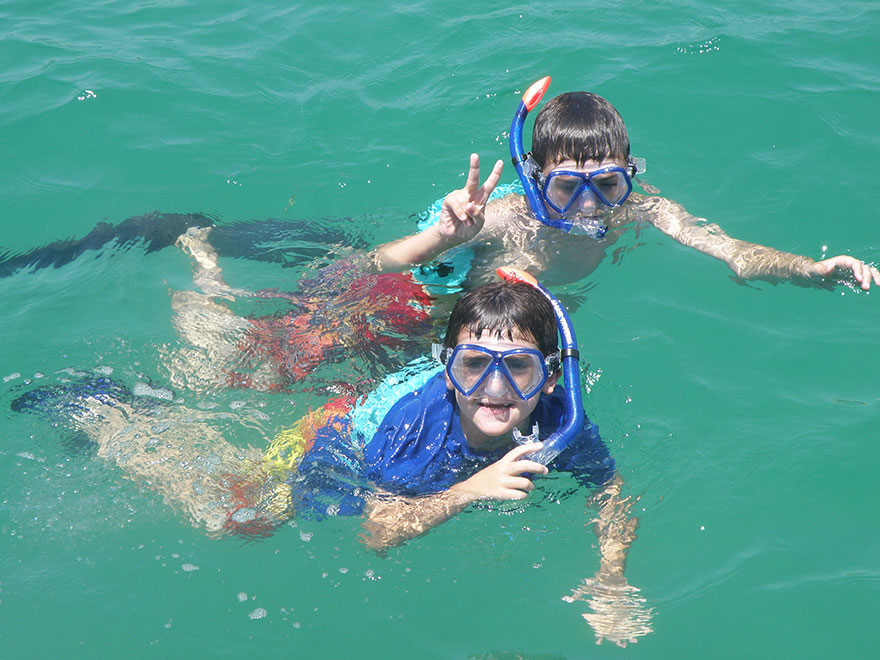Tampa Bay may not rank with the Florida Keys or the Cayman Islands as an international dive destination, but improvements in water quality over the last 20 years have made the bay in our backyard a great place to spend a day.
With an average depth of just 12 feet, Tampa Bay is an easy dive for almost anyone. Even if you’re not an expert swimmer, you can see an abundance of marine life just hanging on to a noodle float and drifting over seagrass beds with a facemask and snorkel.
But while the diving is easy, photography is far more challenging. For one thing, the really cool-looking fish seem to be the fastest-moving. For another, the water keeps moving too so even if you manage to frame the fish you want, it may not be in focus. For an in-depth — and in focus — look at the fascinating animals that live in Tampa Bay, revisit Jimmy White’s amazing collection of undersea life in the Winter 2011 issue of Bay Soundings.
If you’re looking for sealife, avoid the white sand beaches bordering the Gulf of Mexico and focus more on the calmer inshore waters of the bay. You can wade out to seagrass beds from almost any location along the bay — choose one close to your home so it’s convenient enough to visit often.
Off the western shore, where erosion has wiped out nearly a third of the island’s landmass, ruins of historic Fort Dade rise from the bottom of the sea. The stone buildings, originally built to defend the region during the Spanish-American War, resemble even more ancient structures from an underwater vantage. The vertical walls in deeper water attract different kinds of wildlife, including mackerel and barracuda feeding on forage fish that dart past in giant schools.
The southern tip of Egmont is a year-round bird sanctuary. Beach-nesting birds line the shoreline during summer months. Migratory birds, including the distinctive roseate spoonbills and white pelicans, fly in for the winter. They can be seen from a boat offshore but access is strictly prohibited. (Learn more about beach-nesting birds.)
Other favorite places for snorkeling in Tampa Bay include:
- Fort De Soto Park, particularly the seagrass beds off the less crowded south beach area.
- The Pinellas Point area of St. Petersburg where three waterfront parks allow easy access almost any time. Onshore, history buffs will want to visit the Pinellas Point Temple Mound built by prehistoric Indians about 600 A.D.
- Cockroach Bay Aquatic Preserve features deep grass flats.
- Weedon Island wraps around several protected coves with healthy seagrass beds.
- Bishop Harbor at Terra Ceia Preserve State Park just south of the Manatee County line now includes a paved parking area with boat access for smaller boats and kayaks.
- Fred Howard Park in Tarpon Springs where you can just wade out to grass flats from the beach area.
- Caladesi Island, accessible only by boat but regular ferry service is available, has several designated swimming areas.
If your favorite location isn’t included, please email us at editor@baysoundings.com. We’ll include your comments on the Bay Soundings webpage.
Stay Safe While Snorkeling
Boaters in Tampa Bay generally are not used to seeing people submerged in the water outside of designated swimming areas at bayfront parks. And it’s often difficult for boaters to see snorkelers. Make sure you’re visible!
- State law requires a dive flag (red, with a white diagonal stripe) to be displayed aboard any boat used by snorkelers. The flag must be 20 x 24 inches and displayed on wire or other stiffener to hold it fully unfurled and extended in the absence of a wind or breeze.
- A personal dive flag is a great idea. These are smaller versions of the standard “divers-down” flag that are attached to a float and can be towed behind a snorkeler while in the water. Divers-down flags for boats and individuals can be purchased at any dive shop.
- Don’t stray too far from the boat. Stick your head up frequently to see where boats are, and how far you are from shore or your own boat. Stay out of marked navigation channels.
- Weather can change quickly in Florida. Be aware of approaching storms and get off the water before they arrive.
- If you’re in an area with a strong current, be sure to have a safety line from you to your boat or snorkel up-current from the boat.
Originally published Summer 2011
